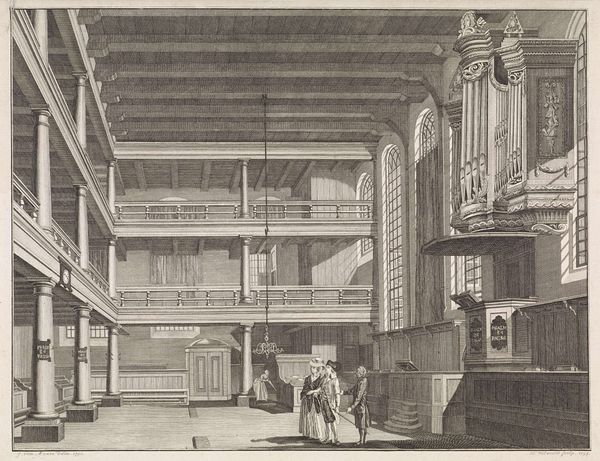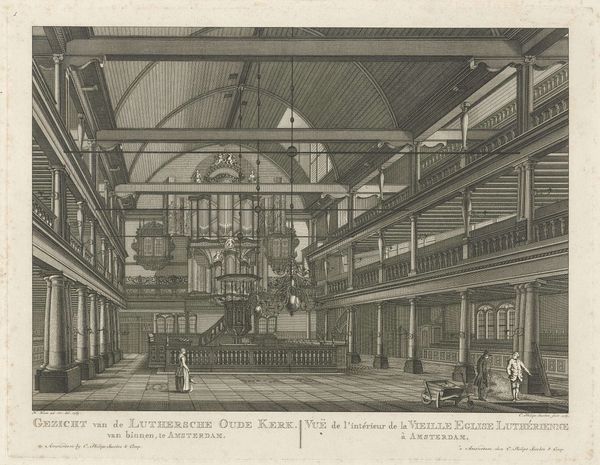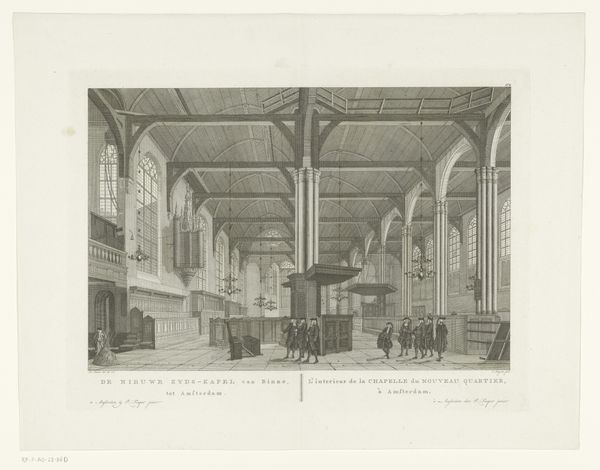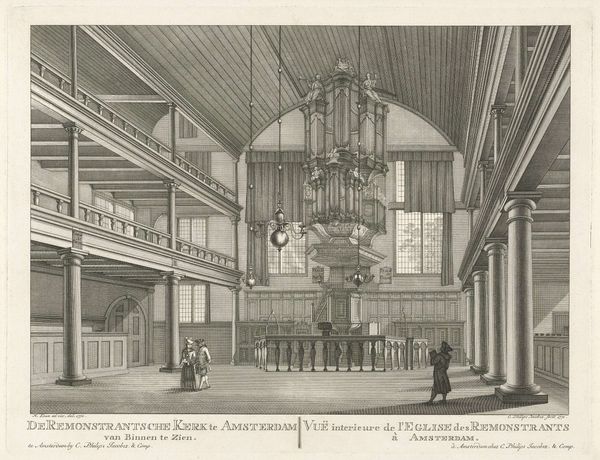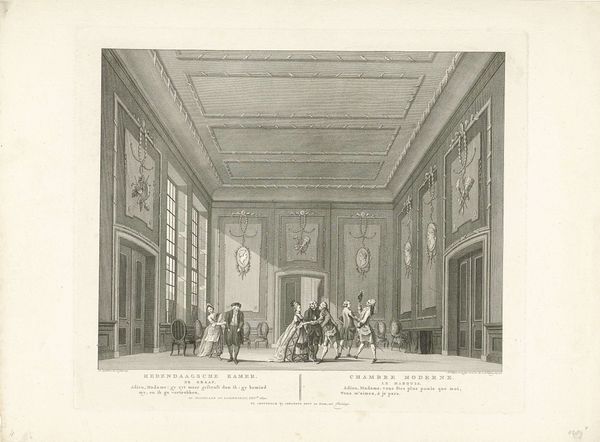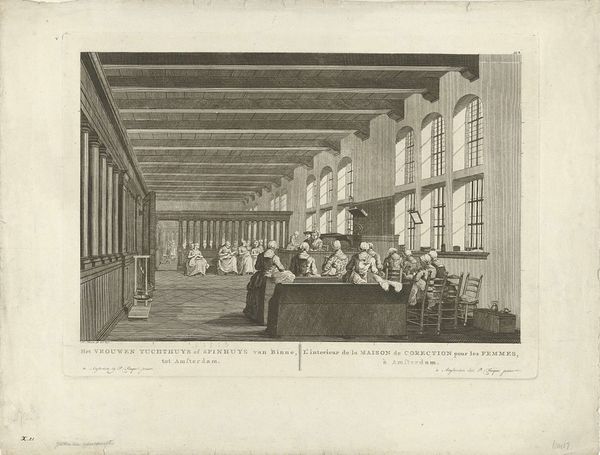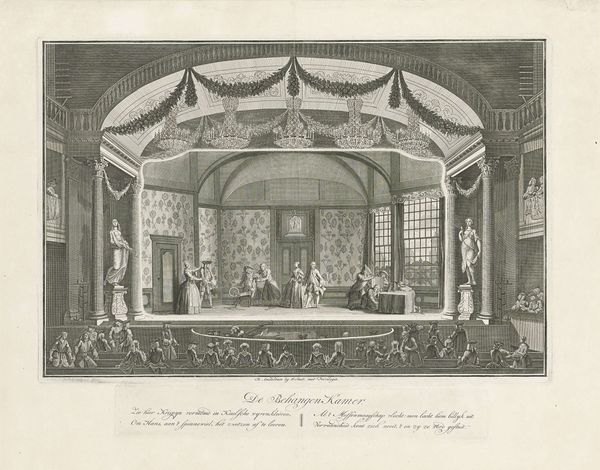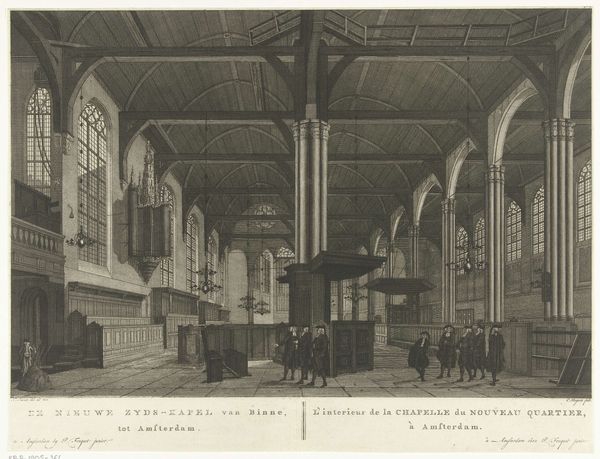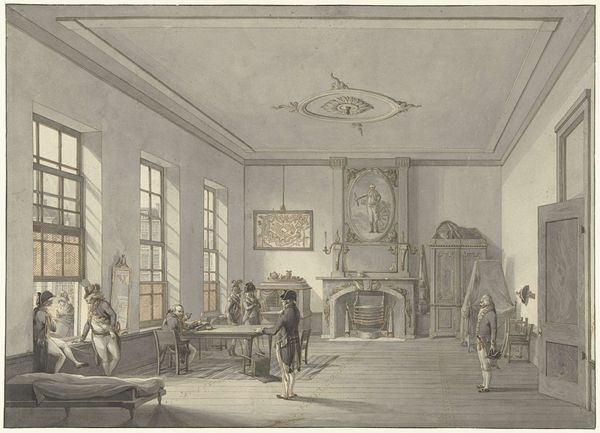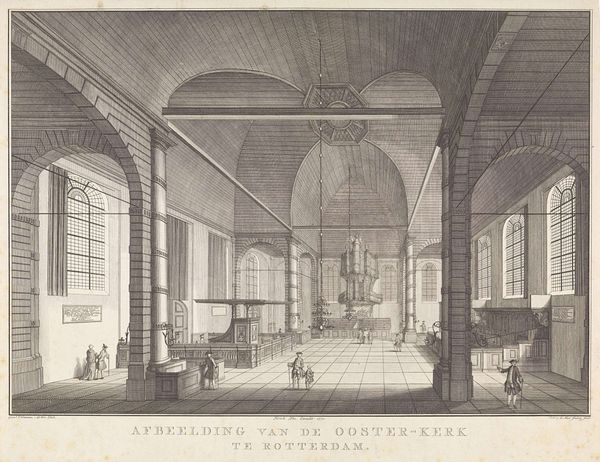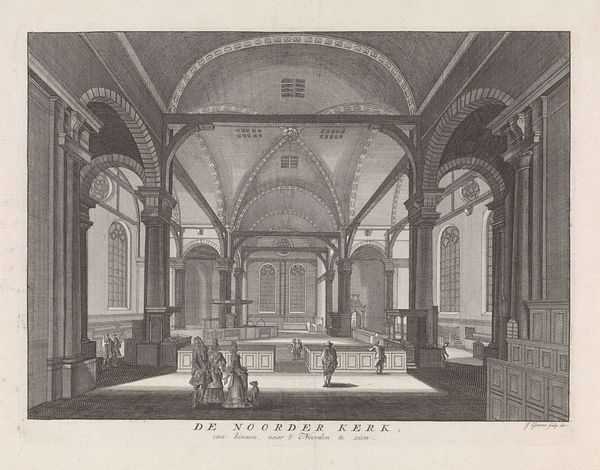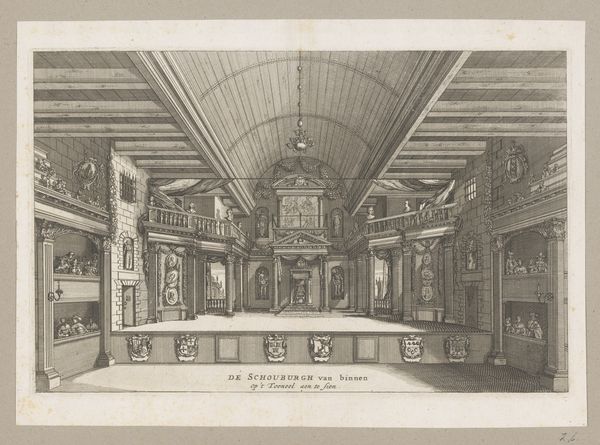
Interieur van de kerk van de Evangelische Broedergemeente te Amsterdam 1800
0:00
0:00
drawing, engraving, architecture
#
drawing
#
neoclacissism
#
old engraving style
#
perspective
#
classicism
#
line
#
genre-painting
#
history-painting
#
engraving
#
architecture
Dimensions: height 168 mm, width 188 mm
Copyright: Rijks Museum: Open Domain
Johan Christoffel Schultz etched this interior view of the Evangelical Brotherhood Church in Amsterdam around 1800. In its clarity, this print expresses the values of the Protestant sect known as the Moravian Church. Founded in the early 18th century, the Moravian Church was known for its emphasis on personal piety, communal living, and missionary work. How might the values of such a group be expressed in art? Note the absence of religious imagery. Instead, the church interior is rendered as a simple, functional space, emphasizing community and reflection rather than spectacle. This print offers insights into religious life in Amsterdam at the turn of the 19th century. By examining archival records, theological tracts, and other historical sources, we can gain a deeper understanding of the social and cultural context in which this image was created. The meaning of art depends on the world around it.
Comments
No comments
Be the first to comment and join the conversation on the ultimate creative platform.
